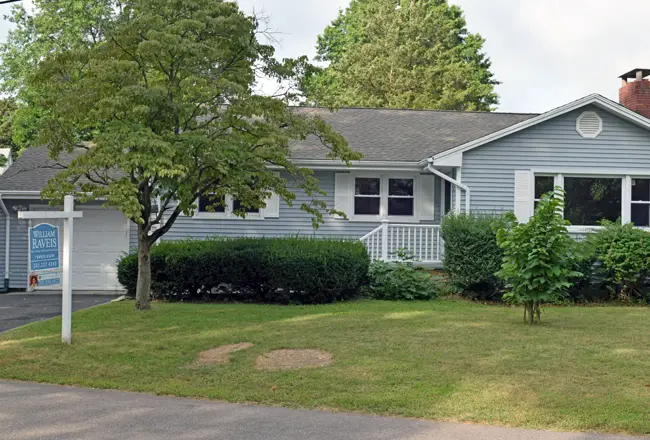Fairfield County housing market: Fewer homes for sale, but at higher prices
Rising prices and shrinking inventory defined second-quarter activity within Fairfield County”™s housing market, according to a new report issued by Douglas Elliman Real Estate.

Photo by Phil Hall
The county”™s overall single-family home sales hit 3,335 in the second quarter, down by 15.4 percent from the 3,944 sales in the first quarter of 2016 but up by 59.4 percent from the 2,092 sales level in first quarter of this year. The average sales price of $716,845 was up 11 percent from the first quarter”™s $645,782 and up 23.3 percent from the $581,263 in the first quarter of 2016. The median sales price was $445,000, up 17.1 percent from the $380,000 price in the first quarter and up 23.6 percent from the $360,000 price set one year earlier. And while the 5,972 total of listed active inventory was 18.4 percent above the first quarter”™s level, it was 7.7 percent lower than one year earlier.
Scott Durkin, chief operating officer at Douglas Elliman, noted the second-quarter statistics showed a market with two significant extremes.
“It was the most second-quarter sales in 12 years, coupled with (the) lowest second-quarter inventory in 12 years,” he said. Durkin noted the removal of long-stagnant listings helped shape sales activity. “Sellers who had been chasing the market had some fatigue and decided to pull their homes off ”“ those overpriced listings were not selling. Now, the market is overheated, but in a good way because the shortage in inventory creates these price points.”
The Douglas Elliman report also found vibrancy in the condo market: the $373,516 average sales price in the second quarter was 13.6 percent above the first quarter”™s $328,911 and 23.5 percent above the $302,497 recorded in the second quarter of 2016. The median sales price of $279,950 was up 14.3 percent from the first quarter”™s $245,000 and 16.1 percent above the second quarter of 2016”™s $241,075. Active condo inventory totaled 1,115, up 9.5 percent from the first quarter but down 4.4 percent year over year.
As for Fairfield County”™s luxury market, the average sales price of $2.72 million was 3.2 percent higher than the $2.64 million average in the previous quarter and 21.9 percent above the $2.23 million average in the previous year. The median sales price of $2.14 million was barely above the previous quarter, but it was 18.1 percent above the $1.81 million reported in the previous year. Total active inventory in this sector was 1,262 in the second quarter, a 11.5 percent drop from the previous quarter and a 26.5 percent plummet from the previous year.
Durkin pointed to the 12.3 percent quarterly decline in the days on market within the luxury housing sector ”“ from 195 days in the first quarter to 171 days in the second quarter ”“ as evidence that XL-sized home prices have an eager buyer base. “Luxury listings generally [take] longer to sell, but we are regularly seeing large deals north of $10 million,” he stated. “Those are very telling signs of where the market is.”
Within the county”™s major submarkets, Greenwich had the highest average price for a single-family house in the second quarter: $2.34 million, up 4.4 percent year over year. Fairfield recorded the greatest year-over-year average sales price upswing, with a 9.3 percent rise from the $665,874 level in the second quarter of 2016 to the $727,640 level in the second quarter.
However, there was some negativity in the market, as three Fairfield County submarkets posted year-over-year declines in the average prices of their single-family homes. New Canaan took a 3.5 percent decline from the $1.78 million price in the second quarter of 2016 to the $1.72 million price in the latest quarterly report. Ridgefield saw an 11.3 percent year-over-year plunge from $788,030 to $698,945. And Westport took a 1.5 percent year-over-year drop from $712,029 to $701,462.
As for the second half of 2017, Durkin predicted an even greater upturn in sales activity. “Agents are telling me this is the busiest July and August they”™ve ever seen,” he said. “Real estate is not seasonal anymore ”“ now, it is based on need. Normally, there would be time for a breather, but not in this market.”